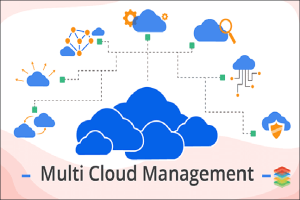
Christopher Penn wants an electric vehicle, and he’s engaged directly with two possible car companies. Unfortunately, “these companies are not data-driven,” he says. So what’s the impact on his experience as a potential customer?
“The salespeople are pushy, and neither company has asked about the main reason I want an EV—they just make an assumption, which is not correct in my case,” says Penn, co-founder and Chief Data Scientist of analytics consultancy Trust Insights.
Penn has worked in marketing for a variety of companies and clients and knows a more data-driven company could deliver an informative and persuasive sales experience—from asking the right questions up front to providing the right message or content at each stage of the research and decision-making process.
Research backs this assertion. For example, 91% of marketers who have direct access to their customer data say it provides them with a competitive advantage, according to a July 2022 CMO Council report titled The High-Velocity Data Marketer.
However, the study—based on a survey of 300 marketing leaders from multiple industries and geographies—also found just 26% are “very confident” in their data, analytics, and insights systems. While the rush toward data-driven marketing is on, many operations are still struggling to make progress.
“Think about demand generation, for example: A lot of teams run campaigns based on what they believe is right, and it’s based on their experience and some good thinking—but not on data,” says Lourenço Mello, Product Marketing Lead of Solutions at Snowflake.
What are the obstacles and how can marketers move the needle toward true data-driven decision-making? Here, experts point out key challenges and practical steps marketers can take.
What’s the challenge with marketing data, and is there light at the end of the tunnel?
Once upon a time, marketers didn’t have enough data to work with. Today, that’s not generally the issue. There’s more than plenty of data, Mello says. “As consumers, we now have access to an unprecedented number of tools—social, mobile, TV, tablets. Over the past decade, it’s been like drinking from the firehose for marketers: all this data, and with different shapes and sizes and velocities.”
Companies capture this constant river of data with many different systems, and there the data often stays. “There’s a ton of fragmentation,” says Mello, mentioning the well-known, ever-expanding Martech Map created by Scott Brinker of chiefmartec.com, as well as various estimates that the average enterprise stack includes upward of 100 marketing tools and services. “As a field, we’ve kind of been stepping on ourselves as we navigate through this complexity.”
Brinker’s 2022 report finds that the field experienced some consolidation in 2021, but Mello says advances in data platform technology and options in recent years are the biggest reason why data silos are starting to break down. Machine learning’s rapid advance is also making it simpler to extract useful insights from large volumes of data.
As always, though, technology can only solve part of the challenge. Thoughtful implementation remains a must. Some marketer’s first efforts at integrating data just resulted in a new silo.
“Traditional organizational models required marketers to go to IT to request data, create a ticket, and so on,” says Mello. “So they said ‘never mind, we’ll do it ourselves,’ and they created this new class, Customer Data Platforms (CDPs). They do a lot of good things, but in some cases, they also took on the integration, modeling, transformation, activation, and from an engineering resources perspective and from a maintenance standpoint, it can become almost unbearable.”
It’s also vital for the marketers’ CDP to be in sync with any other enterprise ‘single source of truth,’ which Mello notes was traditionally a data warehouse. Any discrepancies, including lag time in syncing data, can create a sour experience for customers and wasted marketing spend.
To Mello’s point about resources, beyond a thoughtful approach to architecture and integration, Penn agrees marketers need a full suite of skills and support to get maximum value from their data analysis efforts. “It’s not a technology problem, it’s a people problem,” he says.
All data projects, of course, have to start with a business goal. Penn names five kinds of professionals who are integral to making marketing data projects achieve those goals:
- Coders to write tools and scripts
- Data scientists, statisticians, and/or ‘linear algebra people’ to build the mathematical underpinnings and choose algorithms
- Data engineers to ingest, clean, and integrate massive amounts of data
- Domain experts to apply the data to create an optimal customer experience—for example, entertainment industry experts for a company like Netflix
- Ethics oversight to make sure the right data is governed and used appropriately
“The reason companies fail is not having all five skill sets present,” Penn states.
What leading marketers are working on now
In the CMO Council study, marketers identified their priority projects. “Real-time availability of data insights” ranked as their top concern, cited by 67% of respondents, followed by “extracting data signals across channels” (64%) and “data-driven CX” (56%).
However, real-time availability of insights isn’t easy. It also ranked as survey respondents’ most common answer to data capabilities “still out of reach,” cited by 42%. As Guan Wang, Snowflake’s Global Director of Marketing Intelligence, has noted, truly real-time data is an excellent north-star goal, but a current challenge for most companies. “Getting all the data in real-time is really difficult. Think about linking Google ads and Facebook ads into a centralized platform. A lot of data pipeline is needed to bring it all together,” Wang said in a previous post, Predictive Models Face Off Against Rapid Change.
Mello and Penn both observe another challenge that top companies are wrestling with: scale.
“The highest level of maturity is the automation level, automating one-to-one experiences. It looks clean on a slide, but in the real world, it’s not linear and requires some agility,” Mello says.
“The way I think about this is, you can’t get there all at once. So pick a business problem, solve it, and iterate. And, now that you’ve proved it, can you automate and get efficiencies and scale?”
Penn points out that the sheer volume of data available today can present its own complications.
“If you look at companies like LinkedIn or Google, they have petabytes of data around the planet. It’s computationally very expensive to analyze. So these companies are trying to implement computationally efficient algorithms, but still give good results,” he says.
“They are weighing algorithmic efficiency against computational intensity.”
For the time being, the solution is often to work with a subset of the available data, Penn says. “People are going for ‘good enough,’ because it doesn’t have to be perfect” in order to yield good business results.
Smaller companies may not have collected that volume of data yet, but many are working to compete by sharing data with others. This collaboration with marketing partners demands excellent data governance and privacy controls, Mello says. “Can I share this data with an outside person but be very prescriptive about what they can and cannot see? Privacy preservation is critical.”
Penn points out an underappreciated opportunity for many marketing organizations, regardless of size.
“Here’s the thing—companies are missing the boat on behavioral [data]. Everyone is so hung up on demographic information and identity, they miss out on revenue and expose themselves to unnecessary risk. Marketers can use clustering of behavioral data [from the web, for example] to spot new patterns and customer segments.”
Clearly, a full marketing data foundation requires careful thought, but the many opportunities it creates are enticing.
(Part two of this series will delve into the full effects that data-driven marketing can have on delivering winning customer experiences.)
Originally posted on September 1, 2022 @ 6:00 am

